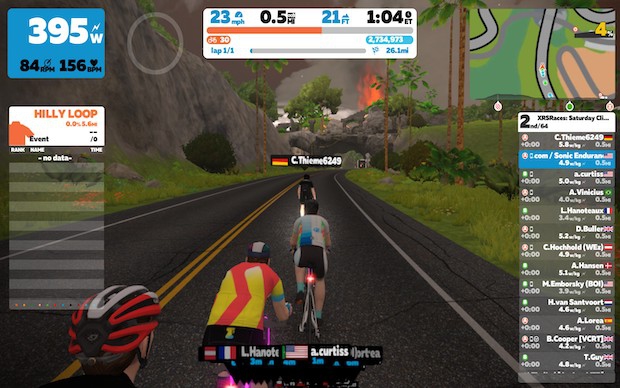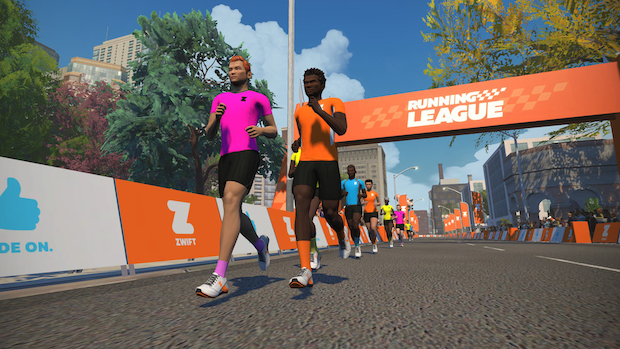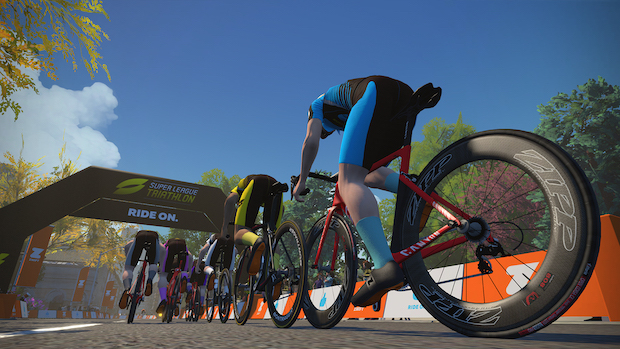Zwift Racing 201
Zwift racing has many nuances to it, and to be successful, technical and tactical aspects can be tweaked to gain an advantage. In this article, we will attempt to highlight a few of these.
Course Recon
Like in real-life racing, to be a successful Zwift racer, the competitor must know as much about the course as possible. Every slight undulation of the course will be an opportunity to attack or to rest. Knowing where the climbs are, the grade, and the distance will dictate how the strategy. For example, if the climb will be 1Km at 7-8% grade, how long will that take at a particular wattage? Let's say the climb will take you 3 minutes, and you know your three-minute power is 300 watts. Obviously, if you start the climb at 400 watts, you will not be able to hold consistent power for the entire climb, and subsequently, you may get dropped. Similarly, on descents, if the grade is greater than 3% and your speed is over 57km/h, you can "super tuck" (No UCI rules infractions on Zwift), which in most instances is just as fast as pedaling.
Bike and Wheel Choices
Most Zwift racers are fully aware of which frames and wheels are the fastest for any given course. Most racers will usually have three different set-ups in their quiver. In general, the "Tron" bike is the best choice for most circumstances. However, as in real life, if the route is flat, a more aero set-up will be slightly faster. For steeper grades, there are lightweight bikes/wheel combinations. If a racer wants to dial in every last detail, their choice will be based on their individual weakness. Let's say the racer is nervous that they will get dropped on a decisive climb; they may choose a light bike knowing that it is less aerodynamic for the rest of the course, but can stay in the draft to mitigate that issue. When Zwift racers on teams chat before races (e.g., our Zwift Racing League team), the Bike / Wheel choice almost always comes up.

Warm-up
I know it has been said on many forums and internet sites that the start of a zwift race is always an all-out effort for the first 30-60 seconds. This makes a warm-up critical, especially if you are an aging zwifter. Most will start a progressive warm-up 30-45 minutes before the race. It is advisable to add a few strenuous efforts 5-10 minutes before the clock strikes zero to get the mind and the body ready for the strenuous efforts to come. Oh yeah, remember that in almost every race, someone will chat something like, "we are going easy for the first 5 minutes, right?" Do not believe it for a second. You will get dropped.
Keep Cool
Thermal regulation is key; let me repeat, thermal regulation is KEY. Riding on a stationary trainer will limit convective cooling to almost zero. Even if your "pain cave" is cold, you can still overheat very quickly. I raced once last year in a 65F room with no fan. Unfortunately (and as presumed), I did not perform to my expectations. Besides losing about 3kgs in that hour, the only useful thing that happened was I produced a new all-time maximum heart rate. Subsequently, I use at least two fans every time I race unless I am working on thermal acclimatization.
Zwift Power
The website zwiftpower (now operated by Zwift) is the place to go for "official" zwift results. It is straightforward to sign up and link to a Zwift account. For the majority of people who race on Zwift, these are the only results that matter. The principal reason is that zwiftpower filters the results based on past performances; for example, an athlete with a high ranking will not be listed if they choose to race in a lower division on Zwift than their zwiftpower category. Zwiftpower also gives athletes the ability to look up other racers and inspect all of their racing statistics. It is interesting to see the efficiency of other riders, especially observing riders with high w/kg that lose races to riders with lower w/kg. Furthermore, zwiftpower is a helpful place to see upcoming events as they have a powerful filtering tool that will help an athlete find appropriate events.
Best of luck out racing!
Tedd Girouard is the Director of Athletic Training at UNLV.




